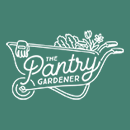Frequently Asked Questions
How much does a no-dig garden cost to set up?
This all depends on how much natural materials that you have access to and what you want your garden design to be. You can nearly get away with spending nothing, if you have access to hay, manure and lawn clippings. All you would need to pay for possibly, apart from your plants/seeds, is the potting mix to plant them in.
If you want more structure for your garden beds, you can choose to place a rail around the edges, to hold the contents in. This could be bought sleepers or even just logs and branches.
For more detailed information read here.
should i create a raised bed or lay my garden bed straight on the ground?
This all depends on preference and budget. Laying a bed straight on the ground is the cheapest and simplest option, but if you are older or have mobility issues, you may choose to use a raised garden bed. Just be aware that the higher the sides of the raised bed, the more materials you will need to fill it.
i'm only renting. what garden options do i have?
I’m renting too! I have put removable raised garden beds at my houses before but when it came time to move, it was just an extra hassle to shovel out all the soil to take the raised beds with me. I now garden in pots. If your pot is large enough, you can even grow fruit trees! And you’ll be able to easily take them with you if you have to move. I still use the no-dig method of layering organic material in my pots but there are just a few extra things that I like to be aware of, such as make my layers thinner with more of them, and adding a handful of worms to the pots to mimic an earth-based garden bed.
For more detailed information read here.
How much space do I need?
How much space have you got? When it all boils down to it, at the very minimum you would probably have room for a pot of herbs, which would mean you would at least no longer need to buy those expensive bunches from the shops and be able to cut down on your plastic waste.
At my rental home, I use square tubs bought from Bunnings, and plant all my vegetables and herbs in these. The beauty of them is they very closely match the size for square-foot gardening, so using that information, I can judge how many plants to put in each tub. My back yard is starting to fill up with planters so I am now putting my herb tubs along the driveway, along with the invitation to my neighbours to help themselves. Where there’s a will, there’s a way.
If you have more room, and want to put permanent beds in your yard, aim to have your beds no wider than 1.2m otherwise it starts to get a bit tricky reaching the middle of the bed.
For more detailed information on square-foot planting, read here.
Should I plant seeds or seedlings?
This answer really depends on the particular plant. There are some plants like carrot, coriander and beetroot that hate having their roots disturbed which makes transplanting seedlings difficult. These I would advise to plant from seed straight into the ground.
Other plants grow really easily from seed, plus you tend to plant more of them, such as peas and beans so here I would advise to grow from seed, as punnets of seedlings could get too expensive.
Other plants you may need only one or two, such as herbs or larger plants like chillies, so here I would advise to buy seedlings, especially the more developed ones.
Other plants you can grow from either seeds or seedlings, such as capsicum, but are quite slow growers so I tend to get impatient and plant seedlings from punnets.
For more detailed information on individual plant needs, check out the plant guide.
Should I grow in the sun or shade?
A lot of gardening advice tends to come from temperate climates, where sunshine can be a bit more of a luxury. Here in the subtropical area, the sun can be just too strong and hot, especially in summer. I find my plants often do better with a bit of protection from the sun. Sometimes with lettuce, for instance, I pop a small leafy branch next to them to act as a parasol of sorts. Growing a variety of shorter and taller plants together also means that the more delicate plants can benefit from their neighbour’s shade.
There are places however, that have too much shade and most vegetables grown in them will tend to be weak and leggy. If you’re uncertain, contact me or just experiment!
For more detailed information on individual plant needs, check out the plant guide.
When is the best time to water?
I water at different times depending on the season. I water in the mornings in cold weather so the plants don’t freeze overnight and in hot weather I water in the evening to minimise the risk of leaf burn and spikes in humidity.
Try to avoid watering in the middle of the day but if you really need to, DON’T water the leaves, especially on hot days, only water the soil. This is because water drops on the leaves can act like a lens and amplify the sun on that spot. You can end up with burn marks on your leaves. Watering the soil in the hottest part of the day can also cause a spike in humidity which can lead to mildew problems which is why I avoid it.
If you have a snail and slug problem they will be attracted to the damp soil at night so you may be restricted to only watering in the mornings.

